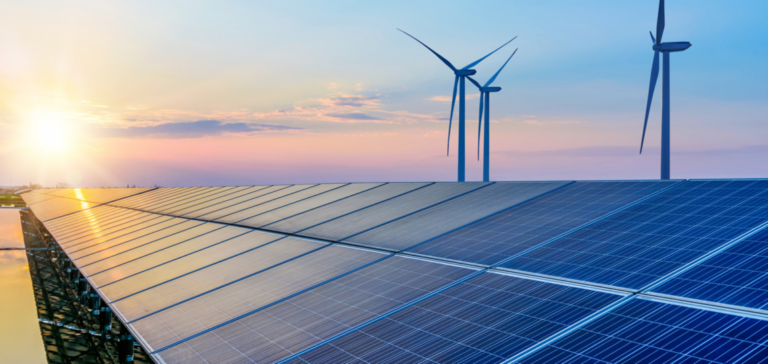Global investment in wind and solar power was nearly 15 times greater than investment in new nuclear power plants in 2021, according to a report released Wednesday.
Some $350 billion has been invested in solar and wind energy projects, compared with $24 billion for nuclear power, according to the World Nuclear Industry Status Report (WNISR) published on Wednesday, as the decline of nuclear power continues: its share of global electricity production fell below 10% last year for the first time.
“Renewable energy is more competitive than nuclear and fossil energy in most markets because it is cheaper and faster to build,” the report says.
“As a result, there is more investment in renewable energy, which leads to lower prices and more deployments, creating a virtuous circle,” WNISR adds.
Nuclear power generation, however, increased in gross terms by 3.1% in 2021, but remains below the 2019 level.
For the second year in a row, China has relegated France to second place in the world’s largest
producers.
Six reactors were connected to the grid last year, including three in China, while eight were shut down for a total of 98 start-ups and 105 closures between 2002 and 2021.
A total of 411 reactors were operating as of July 1, 2022 in 33 countries, four fewer than in 2021, seven fewer than in 1989, and 27 fewer than the 2002 record.
In 2022, five new reactors began producing electricity, two of which are in China, where 40% of the reactors currently under construction are located.
Yet it is Russia that “largely dominates the international market”, according to WNISR, with China limiting itself to domestic projects.
Only three of the 20 reactors currently being built by the Russian company Rosatom are located in Russia.
The impact of the sanctions, imposed after the invasion of Ukraine, is “uncertain” for the moment, the report notes.
Of the ten projects to be launched in 2021, six are Russian technology reactors, including two in India.
Four are projects of Chinese operators.
Russian and Chinese companies are responsible for all 18 construction sites launched between early 2020 and mid-2022.
Of the reactors under construction, “at least half are behind schedule”, with nine projects more than ten years behind schedule, including the Flamanville-3 EPR.





















